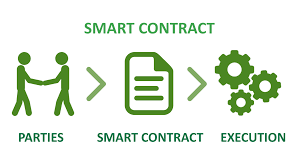From the first stage of the digital currency era to the second stage of smart contracts, the third stage is “blockchain +” and specific applications in various industries. When the application scenarios are constantly expanding, the true implementation of blockchain in all walks of life still has a long way to go. It is confronted with not only the security risks that may be caused by the weakness of related technologies, but also the boundaries of legal intervention in areas such as electronic deposits and the supervisory difficulties led by itsinherent decentralization.
Most application scenarios are still in the early stages of development. Although fields such as payment and settlement have entered a stage of rapid development, the accompanying regulatory issues have emerged one after another. The rise of technology often leads to regulatory failures. The inherent distributed network structure of blockchain makes it difficult for the regulatory subject to be clear. Smart contracts, as the top-level application, while saving judicial costs, are facing numerous barriers in the identification of the contract nature and the assurance of transaction security.

(1) Technical level
The emergence of smart contracts enables the full use and development of blockchain technology. The core of the traditional contract is the will, and then the so-called central structure is generated around the execution of the will. Smart contracts belong to the reversal method, which makes the will appear in a special form for automatic execution. Smart contracts are manifested as the operating system of the will of the transaction party, which can be executed through a series of predesigns, embodied in the combination of contract and code: the contract is represented and executed by the code at the same time. Although the blockchain has mature encryption algorithms, its computing security should still be paid attention to.
Cloud file storage solutions such as Dropbox, Google Drive or OneDrive are becoming more popular for storing documents, photos, videos, and music files. However, they are usually facing serious challenges in security, privacy, and data control.
Smart contracts record the content of the contract in the executable code of the calculation program in digital form. However, due to the irreversibility and agility of computers, it has a great impact on the withdrawal of invitations and promises. Compared with the flexibility of concludingtraditional contracts, thatof making smart contracts can only be strictly enforced in accordance with the rules because they are based on blockchain, which lacks flexibility inherently.

(2) Legal application level
The technological revolution in the era of intelligent Internet causes the existing legal system to face “broken window” challenges and “creative destruction”. The decentralized nature of blockchain makes its application a difficult problem at the legal level. Blockchain provides conditions for applications in various fields from a technical level including improving transaction efficiency, solving credit problems, as well as realizing value transfer.
The use of blockchain in electronic deposit certificates can verify the authenticity of documents without requiring centralized authorization. However, the development of technology and the existing legal system have formed conflictsto a large extent. Problems that still have loopholes at the legal level like responsibility accountability after the occurrence of risks in conflict-related application fields, and the assurance of personal privacy and transaction security still need to be resolved.
Blockchain solves the problemof reliability and authenticity of digital information, but it cannot guarantee off-chain authenticity and integrity and continuous traceability. One important question is whether the judicial department can achieve efficient and accurate node review and certification. Moreover, the corresponding regulatory authorities also lack a clear understanding of blockchain technology, and it is difficult to formulate regulatory standards and industry norms, which lead to the proliferation of blockchain applications.
Regarding the coordination between new technologies and traditional laws, there is still no explicitsolution. The law obviously lags behind new technologies, but the corresponding supervision and guidance are essential. The judiciary will also play a very good role in regulating industry-related behaviors by carefully hearing individual cases.
(3) Regulatory level
The current laws and regulations on blockchain are still relatively lagging behind. In the period of rapid expansion of application, it is a trend to strengthen the supervision of the blockchain industry. The necessity of supervising new financial technology comes from theories of market failure and systemic financial risk. There are big problems not only in the construction of legal norms and systems, but also in the field of supervision.



